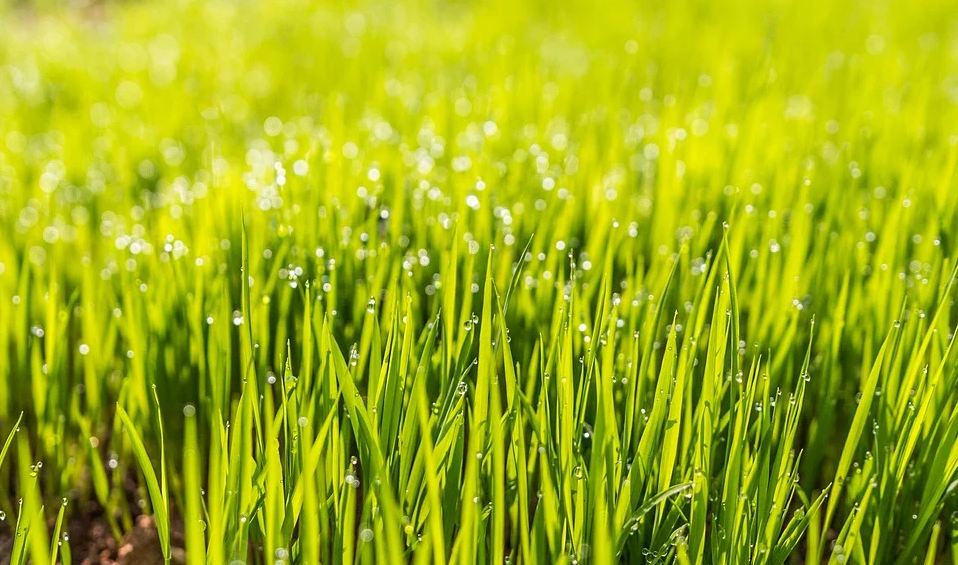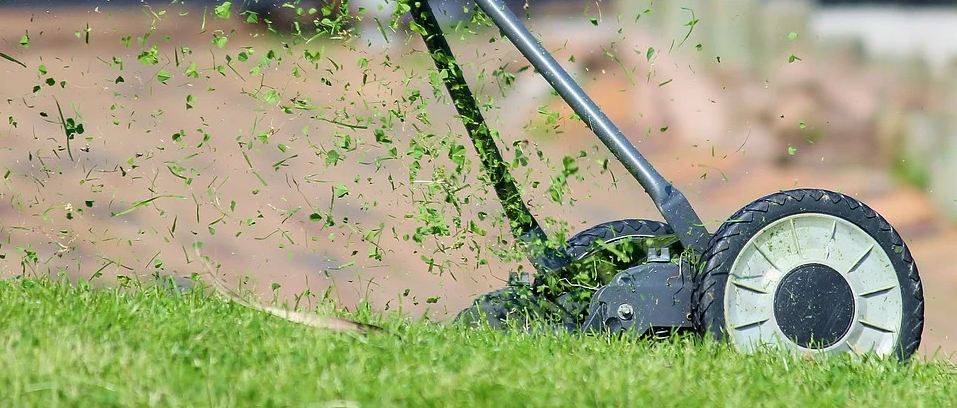Hybrid bluegrass is the genetic cross between two premier perennial species of cool-season lawn grasses. This hybrid bluegrass seed was created in the 1990s by crossing the long-time standards Kentucky Bluegrass (Poapratensis L.) and Texas Bluegrass (PoaArachnidaTorr.). Since emerging in the market, it has appeared on the meadows and lawns of many across the United States, becoming a cult-favorite of lawn care experts.
Hybrid bluegrass possesses the lustrous appearance and recuperative powers of Kentucky bluegrass and the exceptional drought and heat tolerance of Texas bluegrass. Due to its multi-functional nature, hybrid bluegrass has become the epitome of an ideal lawn for many turf managers. With the qualities given, hybrid bluegrass can be an excellent choice to adorn your home. Let’s walk you through the details and the steps of caring for hybrid bluegrass and keeping a flawless lawn.
Why Choose Hybrid Bluegrass?
From its glistening appearance to exceptional resistivity, below are several reasons why you should choose Hybrid Bluegrass for your residential landscapes, lawns, and parks.
Genetic Diversity
Kentucky bluegrass and Texas bluegrass, with their myriad of benefits, are undoubtedly the top choices for cool-season turfgrass; however, several shortcomings accompany these benefits.
Kentucky bluegrass produces the densest and lush lawn in northern climates where moderate summers and cold winters promote its natural preferences. However, it has shallows roots, which make it highly shade-intolerant and vulnerable to drought stress. Due to this reason, its traditional varieties go dormant during spells of high temperature and drought as it is. High maintenance, including regular irrigation, is needed to maintain the texture and quality of this grass.
Similarly, Texas bluegrass makes the ideal grazing land for wildlife and can be used for enhancing the appeal of your lawn; however, it can only withstand limited shade and needs ample snow cover to survive winters. When crossed, the strengths of both species are commingled while their shortcomings are quashed. Blending Hybrid Bluegrass with other cool-season grasses like perennial ryegrass further adds genetic diversity, improving the patch performance and increasing the durability of the cultivar.
Improved Heat Tolerance and Shade Hardiness
Though most cool-season grasses thrive in mild and moderate temperatures and suffer in spells of heat, Hybrid Bluegrass flourishes in the heat of summer instead. High temperatures promote growth in Hybrid bluegrass. This unique feature makes it tolerant of damage and traffic in summers, unlike any other bluegrass variant. Because of its aptness to tolerate prolonged spells of heat, hybrid bluegrass is often referred to as the heat-tolerant bluegrass. Though heat promotes the growth of Hybrid bluegrass, it demonstrates exceptional shade hardiness; it manages to blossom in partial shade areas as well, where limited daylight stunts the germination of other warm-season grasses.
Survives Prolonged Drought Periods
Hybrid bluegrass lives up to its reputation and grows to its full height even in dry areas with little irrigation. It can survive prolonged spells of drought better than any other bluegrass or turf-type tall fescues. Although it briefly enters dormancy in stressful dry periods and loses its lush green color, it has a fast recovery rate unmatched by any other bluegrass species.
Fast Germination and Low Maintenance
Hybrid bluegrass has a longer establishment rate than other bluegrasses; however, once established, it germinates quickly and goes from seed to mature plant faster than Kentucky bluegrass. This cultivar is undoubtedly the easiest to grow; it requires little maintenance, unlike traditional variants of bluegrass, and thrives without much effort from your side.
Fights off Pest Attacks
Another outstanding characteristic that makes hybrid bluegrass stand out is its disease tolerance. It has demonstrated promising persistence to several diseases, including Rhizoctonia blight: one of the most vicious summer diseases plaguing the lawns across many States. Hybrid bluegrass shows better tolerance to Rhizoctonia blight, more commonly known as brown patch than Kentucky bluegrass and tall fescue as it has much lower brown patch pressure. This brown patch tolerance maintains the quality of turf during spells when disease pressure is on its verge and saves additional costs of fungicide applications.
Sturdy Root System and Better Wear Tolerance
Hybrid bluegrass has a robust root system that extends and penetrates deep into the soil. These thick, sturdy roots foster drought tolerance in hybrid bluegrass and allow them to withstand foot traffic better than other bluegrass varieties. Due to its outstanding foot traffic hardiness, lawn managing experts prefer planting hybrid bluegrass in golf roughs and other recreational facilities.
Needs Little Water
Once the root system is fully established, hybrid bluegrass needs little watering. Thanks to its extensive root system and heat tolerance, hybrid bluegrass can survive long spells of drought with little irrigation without losing its color. It uses less water compared to other cool-season grasses, helping you avoid additional irrigation costs and easing the pressure on your pocket. This feature proves highly beneficial in areas where water competition is high. By planting hybrid bluegrass, you can maintain a lawn that is both eye candy and easy on the pocket.
Creeping Growth Habit
Hybrid bluegrasses have a creeping growth habit characterized by large and thick underground stems or rhizomes. News grass plants grow from these sturdy stems so, the thicker the protrusions, the denser the lawn. The creeping growth habit provides for recuperative potential; the grass is able to heal from footwear and fill up stark spots at a fast rate. Turfs in high-use areas, where grass frequently faces wear and foot traffic, can benefit from the improved turf density of hybrid bluegrass. This feature is unique to hybrid bluegrass and is absent in most tall fescue.
Neat Appearance
Most turfgrasses do not fare well when mowed at low heights. Doing so, especially in the heat, causes the grass to wither, turn brown in places where it is cut from, and at times even die in patches. However, this is not the case with hybrid bluegrass. It thrives when mowed at low heights, enriching the look of your golf course or lawn.
How to Care for Hybrid Bluegrass?
Hybrid bluegrass is a low maintenance turfgrass and needs little attention once established.
Plant in the Fall
Like any other bluegrass, you must plant the hybrid bluegrass in the fall season when the soil temperature is between 50 to 65 degrees Fahrenheit. Take a soil sample to prepare the soil. Furthermore, make proper amendments if needed, like tilling or raking to ensure a leveled planting surface.
New Turf
Seed two to three pounds for every thousand square feet area or eighty to one twenty lbs per acre land.
Overseeding
Seed in 1 by 1.5 ratio. Plant 2.5 pounds per thousand square feet or sixty lbs per acre for broadcast overseeding.
Mowing Height
We recommend a Low mowing height for a neater look, with the optimum length being two to five inches tall.
The Takeaway
The combination of shade hardiness, fast germination rate, low maintenance along with heat and drought tolerance makes an eye-catching turfgrass. If you are looking for a cool-season turfgrass that is both appealing and easy to maintain, you will find no better option than Hybrid Bluegrass in the market!


